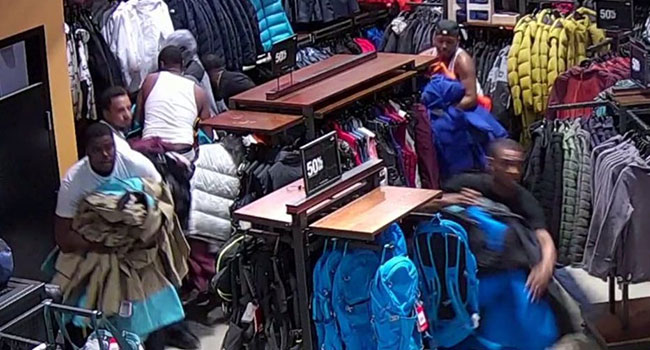
Billions on the line: Keeping Stores and Shoppers Safe during the Holidays
- By David Studdert
- Nov 15, 2021
Each year millions of people emerge from their turkey comas to brave the stores. In 2019, the National Retail Federation (NRF) stated that 84.2 million shoppers were in-stores on Black Friday, and the entire weekend from Thanksgiving to Cyber Monday saw 189.6 million shoppers. Retailers rely heavily on the holiday shopping season, making roughly 19% of their yearly sales.
From Nov. 1 to Dec. 31, shoppers in the United States spend almost $730 billion on the holidays. With an increase also comes more merchandise shrink from shoplifting, organized retail crime and other methods. Furthermore, the increase in crime increases safety concerns for customers and employees.
Increase in Shrinkage
Shrinkage, or the loss of inventory due to theft, shoplifting, error, or fraud, increases dramatically during the holidays by more than 15%. In fact, 37% of retailers’ annual shrink loss happens during the holiday shopping season. One of the main reasons shrinkage rises is increased foot traffic, which creates chaotic stores and busier employees. Thieves are opportunistic and take full advantage of occupied employees and a better chance to hide in the crowd.
Organized Retail Crime
Organized retail crime, or ORC, is a type of theft that includes cargo theft and pushout theft but also expands beyond that. Unlike typical shoplifters, these professional thieves work as an organized group to steal massive amounts of inventory.
They target high priced items that are easy to resell. ORC results in billions of dollars’ worth of losses for retailers and increases the likelihood of violence on a retail property. Like other thefts, ORC increases during the holidays because there is more opportunity. The stores are busier, employees are distracted and there are more products in the store.
Two types of ORC that are steadily increasing are cargo theft and pushout theft. Cargo theft is the taking of any cargo during its progress through the supply chain. It accounts for as much as $30 billion in losses every year. Cargo thieves target almost any product, from medical and farm equipment to computer pieces and even food. They use multiple methods including leakage operations, fictitious pickups, coerced stops and grab and go.
Pushout theft involves a thief filling a shopping cart with merchandise and then walking out the front door without paying. Typically, these thieves go unnoticed until they walk out. Unlike typical shoplifting, which relies on concealment and opportunity of smaller items, pushout theft targets larger items and more of them. The average loss of pushout theft is $1,342 and 10% of the thefts end in violence.
Safety on Property
The safety of those on your property is the number one concern. Without a safe shopping and/or working environment, both your customers and employees will refuse to set foot on your location. Black Friday and the holiday shopping season see a huge influx of people on the property, which will also increase the likelihood of crimes and accidents happening both inside and outside the store.
The parking lot is one of the most dangerous places. In fact, the FBI reports that parking lots and garages are the third highest location for violent crime in the nation. Criminals take advantage of the lower lighting, high people turnover and lower surveillance to steal, vandalize, and commit other violent crimes. During the holiday shopping period, criminals are looking for easy marks, including cars full of previous purchases.
What Can You Do to Prepare?
Black Friday and the holiday shopping season are just weeks away. Now is the time to start preparing to help prevent theft and crime. While there is no surefire way to stop theft, there are steps that retailers can take to help prevent it.
Many loss prevention methods can and do reduce theft, and several of them are extremely simple. Even something as simple and inexpensive as posting warning signs against shoplifting can help prevent theft. However, some stores go to the opposite extreme and invest in more loss prevention personnel and guards. In order to balance cost and effectiveness, we suggest video monitoring as an option that sees huge results.
With proper preparation, the holiday shopping season will be successful for both retailers and customers. Now is the time to check on your security systems and train your employees, not Nov. 24. Remember to account for the parking lot and try to take away the opportunities for theft. Happy shopping and Merry Christmas.